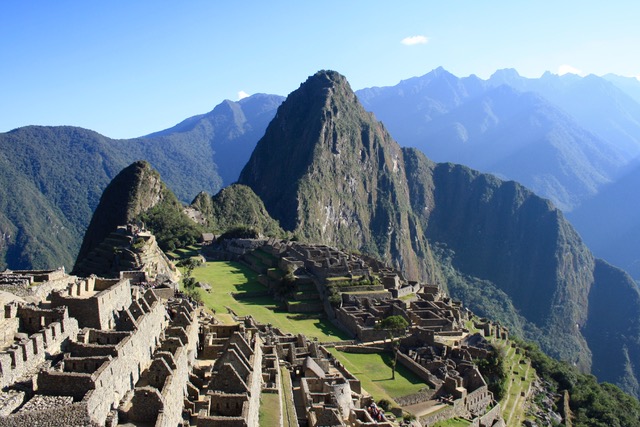Machu Picchu: a historical perspective
a journey through ancient history to modern wonder
2/8/2024

Nestled amidst the towering peaks of the Andes Mountains in Peru, Machu Picchu stands as a testament to the ingenuity and architectural prowess of the ancient Inca civilization. This awe-inspiring archaeological site has captured the imagination of travelers, historians, and adventurers alike, drawing countless visitors from around the world to marvel at its enigmatic beauty and rich cultural heritage. From its mysterious origins in the mists of time to the Spanish conquest and subsequent rediscovery, the story of Machu Picchu is a fascinating chronicle of human achievement, perseverance, and cultural resilience.
Ancient History: The Origins of Machu Picchu
The origins of Machu Picchu are shrouded in mystery, with much debate among archaeologists and historians regarding its purpose and significance. Believed to have been constructed in the 15th century at the height of the Inca Empire, Machu Picchu served as a royal estate and religious sanctuary for Inca rulers. Its remote location high in the Andes Mountains, surrounded by steep cliffs and dense jungle, contributed to its isolation and preservation over the centuries.
The layout of Machu Picchu reflects the sophisticated urban planning and engineering prowess of the Inca civilization. The site is divided into distinct sectors, including residential areas, agricultural terraces, ceremonial plazas, and temples, all interconnected by a network of finely crafted stone pathways. The precision of Inca stonemasonry is evident in the construction of buildings and terraces, where massive stone blocks are fitted together with remarkable precision, without the use of mortar.
Spanish Involvement: Conquest and Colonial Legacy
The arrival of Spanish conquistadors in the 16th century marked a tumultuous period in the history of the Andean region, leading to the downfall of the Inca Empire and the subjugation of indigenous populations. Although the exact circumstances surrounding the abandonment of Machu Picchu remain unclear, it is believed that the site was abandoned and fell into obscurity following the Spanish conquest, as the Inca population fled to remote regions to evade Spanish rule. For centuries, Machu Picchu remained hidden from the outside world, known only to local indigenous communities who revered the site as a sacred place of spiritual significance. It was not until the early 20th century that Machu Picchu captured the attention of the broader international community, thanks to the efforts of American explorer Hiram Bingham.
Development and Rediscovery: Hiram Bingham's Expedition
In 1911, Hiram Bingham led an expedition to the Andes Mountains in search of the lost city of Vilcabamba, the legendary final refuge of the Inca rulers. While exploring the rugged terrain of the Urubamba Valley, Bingham and his team stumbled upon the overgrown ruins of Machu Picchu, which had remained hidden from the outside world for centuries.
The discovery of Machu Picchu captured the imagination of the world and sparked widespread interest in the ancient civilizations of South America. Bingham's expeditions to Machu Picchu, along with subsequent archaeological investigations, shed new light on the history and culture of the Inca Empire, revealing the remarkable achievements of this advanced civilization.
Present Status: UNESCO World Heritage Site and Tourism Destination
Today, Machu Picchu stands as one of the most iconic and visited archaeological sites in the world, attracting millions of tourists annually to its breathtaking mountain setting and well-preserved ruins. In 1983, Machu Picchu was designated a UNESCO World Heritage Site in recognition of its cultural and historical significance, ensuring its protection and preservation for future generations.
Despite its popularity as a tourist destination, Machu Picchu faces numerous challenges, including environmental degradation, erosion, and the pressures of mass tourism. Efforts are underway to mitigate these threats through sustainable tourism practices, conservation initiatives, and community engagement programs aimed at promoting responsible stewardship of this irreplaceable cultural treasure.
A Symbol of Human Ingenuity and Resilience
Machu Picchu stands as a testament to the enduring legacy of the Inca civilization and the remarkable achievements of ancient Andean cultures. From its mysterious origins to its rediscovery by Hiram Bingham and its present-day status as a UNESCO World Heritage Site, Machu Picchu continues to captivate the hearts and minds of people around the world.
As we marvel at the awe-inspiring beauty of Machu Picchu and contemplate its rich cultural heritage, we are reminded of the importance of preserving our shared human history and heritage for future generations. Through responsible stewardship and sustainable management, we can ensure that Machu Picchu remains a source of inspiration and wonder for centuries to come, a testament to the enduring spirit of human ingenuity and resilience.
Since 1989, First Cabin Travel has offered luxury-styled itineraries to unique and varied destinations with the majority of bookings derived from repeat clientele and their enthusiastic referrals.
First Cabin is your passport to excellence
CA Reg: 2018168-40






